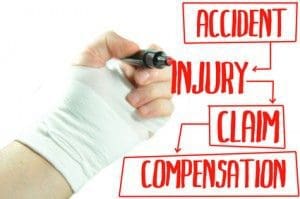STEP 1 Stop. If your vehicle is involved in an accident and you don’t stop, you may be subject to criminal prosecution.
STEP 2 If anyone is injured, if the total damage to all the vehicles involved appears to be MORE than $1,000, or if you suspect that any of the other drivers involved are guilty of a Criminal Code offence (such as driving under the influence of drugs or alcohol), call 911 and follow the instructions given to you by the emergency operator. Police will arrive as soon as possible.
Do not try to move anyone injured in the accident — you may aggravate their injuries!
If no one is injured and total damage to all the vehicles involved appears to be LESS than $1,000, call your local police for instructions. Police units may or may not be dispatched to the scene. If local police do not attend the scene of the accident, they will instruct you to report to a Collision Reporting Centre within 24 hours.
Collision Reporting Centres are police facilities created to assist motorists in reporting motor vehicle accidents. At the reporting centre you will be assisted in completing a police report, and damage to the vehicle will be photographed.
Collision Reporting Centres are currently available in a number of jurisdictions across the province. Visit: www.accsupport.com or call: (416) 745-3301 to locate the Collision Reporting Centre nearest to you.
If there isn’t a Collision Reporting Centre in the area of the accident, the police will ask you to go to the nearest police station to file a report.
STEP 3 If it is safe to do so, move your vehicle to the side of the road, out of traffic. If your vehicle cannot be driven, turn on your hazard lights.
If you have access to a digital camera or a cell phone, you should use it to take pictures of the scene; preferably before the vehicles are moved. You should also use your cell phone to audio record as much information as possible.
STEP 4 Write down the names, addresses, and telephone and driver’s licence numbers of all of the other drivers, the licence plate numbers of the other vehicles, as well as the names and addresses of the registered owners of the vehicles, and the insurance information for each of the other vehicles.
STEP 5 Also obtain the names, addresses, and telephone numbers of passengers and witnesses.
STEP 6 Jot down specific details about the scene of the accident, time of day, and what exactly happened as you remember it.
STEP 7 Report the accident to your broker, agent, or insurance company as soon as possible after the accident. For more information on filing an insurance claim with your insurance company, call them and they will help you with the process.
Remember…
As difficult as it may seem, it is important that you remain calm.
Do not argue with other drivers and passengers. Save your story for the police.
Do not voluntarily assume liability or take responsibility, sign statements regarding fault, or promise to pay for damage at the scene of the accident.
Be careful of unauthorized tow truck operators pressuring you to have your vehicle towed, demanding immediate payment for the tow, or attempting to take your vehicle to a garage or body shop of their choice. They may try to use the confusion of the moment to intimidate you into allowing your vehicle to be towed. If you feel you are being pressured, ask the police for the name of an authorized tow truck operator and have your vehicle towed to a Collision Reporting Centre or a police compound until you can talk to your insurance company.
Be prepared for any emergency on the road
Always keep a basic vehicle first aid or emergency kit in the trunk of your vehicle. You can easily create an emergency kit for your vehicle by filling a plastic storage container with the following:
a basic first aid kit, a disposable camera, emergency road flares, warning triangles or cones, a fire extinguisher (A-B-C Type),
a flashlight and extra batteries, bottled water, booster cables, a tire repair kit and pump, a small tool kit, a towel, a pair of work gloves,
some type of nonperishable food, hand wipes, a thermal blanket.
PLEASE USE SOME NICE PICTURES TO GO ALONG WITH THIS BLOG.


